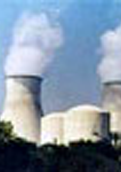K. Subrahmanyam and the IDSA
K. Subrahmanyam, who passed away on 2 February 2011, has been hailed as one of India's leading strategic thinkers. Having joined the Indian Administrative Service (IAS) in 1950, his career graph turned out to be unique. He was one of those rare bureaucrats who came to be recognised more as a strategist than as a typical government official.
- Arvind Gupta |
- July 2011 |









